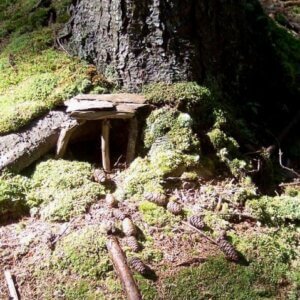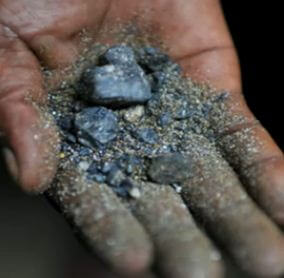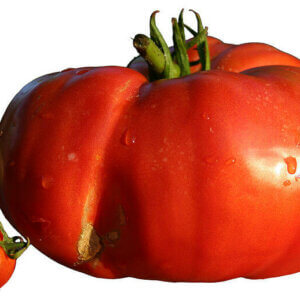When most Americans think of a stove, they think of a collection of heating elements that sits atop an oven.
In modern times, this stove and oven combination is usually a box made out of thin sheet metal and is powered by either electrical energy or gas (natural gas or propane). However, this is not how it always was. In fact, this is a fairly modern invention that is confined to very recent history.
For most of humankind’s past, cookstoves in a residence looked quite different from those of today. They were often very large and served more purposes than just cooking – usually they were also the main source of heating. Although of many shapes and sizes, they all now share a common name – masonry cook stoves.

You may have read our earlier article on Masonry Heaters (you can find it here), and if you did, you’re already aware that these ancient, massive, efficient wood burners are far more than a picturesque element of interior design. However, if you want to truly maximize the utility and potential of your Masonry Stove, take a page out of history and make it do your cooking and baking as well as your heating!
What Is A Masonry Cookstove?
A masonry cookstove is a stove that is made out of some sort of masonry product as opposed to the sheet metal of modern stoves. Brick, stone, clay, and tile are some of the materials that are most commonly used in the construction of these stoves. As far as the source of heat goes, these masonry cookstoves are almost universally powered by wood. Some are made to be fired with cordwood (split more thinly than in your average cast iron woodstove used for heating), while others are designed to use sticks and small branches.
There are places in the world that use bundles of straw or even dried manure of livestock (typically cattle of some sort). There was a time in the past when coal was also widely utilized, but that is now a relic of the past in most locales.

There are as many different designs for masonry cookstoves as there are groups of people that came up with them. That makes it extremely difficult to say exactly how a masonry stove is designed. However, there are a few general aspects that most of them share.
First, all of them are made in place from massive materials such as stone, mud, and brick. Secondly, all of them have some sort of firebox, but they are varied in design: some have a door and others don’t; some are lined with firebrick, and others are simply hardened mud; some are fed vertically, but most are fed horizontally from the front or side.
All of those that operate as a stove, and not just an oven, have some sort of opening above the firebox to let the fire heat a pot, pan, or wok. Aside from that, there is little shared in common among all masonry cookstoves.

People from every country around the globe have come up with their own version of masonry cookstoves. Some are fairly simple contraptions made freely from the mud on site (and you can read about how to construct a simple mud stove at our earlier article here ). Others are extremely complex and expensive structures made of brick or stone laid by a professional stonemason that occupy a substantial footprint within the home.
Most fall between these two extremes. They can be found in the smallest hovel, and they also make their appearance in some of the fanciest restaurants in the world. Few other devices have such a cosmopolitan nature!


How Do Masonry Cookstoves Work?
The way in which these cookstoves work varies according to their specific design. However, there are generally two main ways that food is cooked.
Direct Heating

The stove portion is always heated directly by the wood. The stove surface itself is usually some thick heavy metal – cast iron is the most popular choice. This large sheet of metal will generally have two or three sets of concentric circles that can be removed with a special tool. This allows you to control how much of the fire will directly touch the pot or pan on the stove. One or two of the series of circles is usually directly above where the firebox is, and the others are usually off to the side. This furthers your ability to control how hot the pot will get as the pots directly over the fire will obviously get much hotter than the ones over the indirect heat.
As far as the oven portion goes, there are a few different designs. They mainly vary in their relation to where the fire is. Some are made so that the fire is made directly in the oven and heats the food directly. This is how the best pizza ovens are made. For a pizza oven, a fire is made in the center of the oven. Once it has burned long enough to heat the cooking surface within the oven, the fire is pushed to the rear and/or sides of the oven. The pizza, or flatbread if you like, is put right where the fire was initially built. It is heated from under by the hot stone, and the fire that is still blazing around it cooks the top to perfection in mere minutes. However, while this sort of design is optimal for cooking pizza and flatbreads of various sorts, it is not the best setup for any other sort of cooking.
Another design has a wall between the firebox and the oven portion of the cookstove. The wall prevents direct radiant heat from the fire from reaching the things cooking in the oven. Instead of being cooked with the fire’s radiant heat, the hot gases from the fire are channeled to the oven chamber and heat it up. This provides a more even heat as all the air in the oven compartment is at approximately the same temperature. This is great for most of the thing you would normally cook in an oven such as roasts, casseroles, and such.
Thermal Mass

Being made of such massive materials as stone, brick, and clay, these cookstoves have a lot of thermal mass. Thermal mass is a measure of the heat storage capability of a material. Items with a lot of thermal mass are able to hold vast amounts of heat energy and release it slowly over time. Things with a low thermal mass are not able to hold much heat energy, this makes them both heat up and cool off quickly. Masonry cookstoves use this thermal mass to great advantage in two ways.
The first way that these stoves use thermal mass is for cooking. This is especially true of those cookstoves that are designed to bake bread. In a bread-making cookstove, the oven portion is made out of as much massive material as possible and has a door that is able to seal well. The fire is built directly in the oven where the bread will be baked. This fire is kept burning as hot as possible to heat up the entire mass of the oven. Once it is up to temperature, the remains of the fire are scraped out of the oven and the baking surface is cleaned. Then the bread is placed directly on the floor of the oven and it is sealed.
The heated mass of the oven itself will release its heat slowly over time and cook the bread. Often, people will have a series of items to be cooked to utilize all of the heat energy that was put in the mass. Bread is cooked first as it requires the hottest temperature, then cookies can be baked once the bread is finished, and then when it has cooled off but still warm, it serves as a perfect dehydrator. How efficient is that?
The second way these stoves utilize their large thermal mass is for heating. In modern times, the heating function is often of secondary importance as they are sometimes built in homes with central heating. However, in the past, the heating function was as important, if not more important, than the cooking function. They were often built in the heart of the home and the heat that was given off by these massive stoves provided warmth to the entire house. It was an even heat as the whole mass of the stove radiated off a pleasant warmth. Many argue that the warmth provided by such stoves is vastly superior to the forced air heaters of the modern age.
Some Examples in Pictures
Now that you have read through a brief primer on masonry cookstoves, let’s take a look at some notable examples from around the world.
Just a quick scroll through the pictures should be enough to show you just how much variety exists in the world of masonry cookstoves. Enjoy!











You may believe that cooking with wood is something relegated to the past, or merely to campfire marshmallows, but I hope that this article has proven that wood-fired cooking is alive and well in our modern world. Not only that, it is a viable and useful option for those looking to take their heating and cooking directly into their own hands with their own fuel.
How To Build A Masonry Stove
- Finnish Masonry Cookstove: mainewoodheat.com
- Stone Cookstove: wildernessdweller.ca
- Outdoor Stone Oven










































süper fikir yaratıcılık elinize aklına sağlık
Hello:
I write you from basque country.I like very much this kind of masonry cookstove.
¿ Do you say me information abouts guide books to build it?
Thank you
how do you clean the masonary wood stoves if is has that many compartments?
Good question!
Masonry stoves are extremely clean burning. There are reports by many that they have not had to clean theirs after ten years of use. Since you are burning hot and fast most all particulates and soot get consumed instead of sticking to the side walls of the flue. And there are clean out entries for ashes.
But as for a good interior wall cleaning after some years. I am unsure!
i can ALWAYS dream and thank u for making it possible !
Thank you for assembling such a fantastic array of cooktops/heaters.
Unreal!
i’m looking to buy a wood cook stoves to use in Africa and would like a brochure with prices please.
Thank you
Hi, I am a drafting and Graphic Design student at Northwest College in Powell, Wyoming. I am currently in the process of designing a ‘Residential Dwelling’ for my Architectural Drafting class.
I am trying to incorporate a functional wood burning cook stove alongside a wood burning stove or fireplace in the kitchen and living (great room) of my design. Currently my design shows that there isn’t a wall in between these two rooms but the fireplace is what separates the two rooms.
Would you be able to provide me with some photos of some fireplaces or wood stoves or some such that would fit what I am trying to design? I was looking at the photos of ‘masonry heater & cooktop and ovens’ and would like to see some more examples.
My kitchen is designed to be located on the eastern side of the house with the livingroom in the center and a sleeping wing off the northwest corner of the livingroom. My total design right now without tweaking is a total of 11,000 square feet top to bottom. That is a total of an attic and basement and then two floors in between.
I have homestead and need to build a cook stove/bread oven for cooking and heating the cabin,I’m looking for publications , drawings ,plans, manuals , l have a background in brick laying and masonary work .
Thanks for all the help I can get.
Mauro
Missouri department of natural resources has a PDF book on their website with plans for masonry stoves. I personally downloaded it. Enjoy
Hey Jen if you could send the link on the Missouri department of natural resources that would be help thank you.
Hello, Hyrum–
We are using these plans as well! I happened to have the link handy.
https://dnr.mo.gov/pubs/pub781.pdf
So glad I found this info.